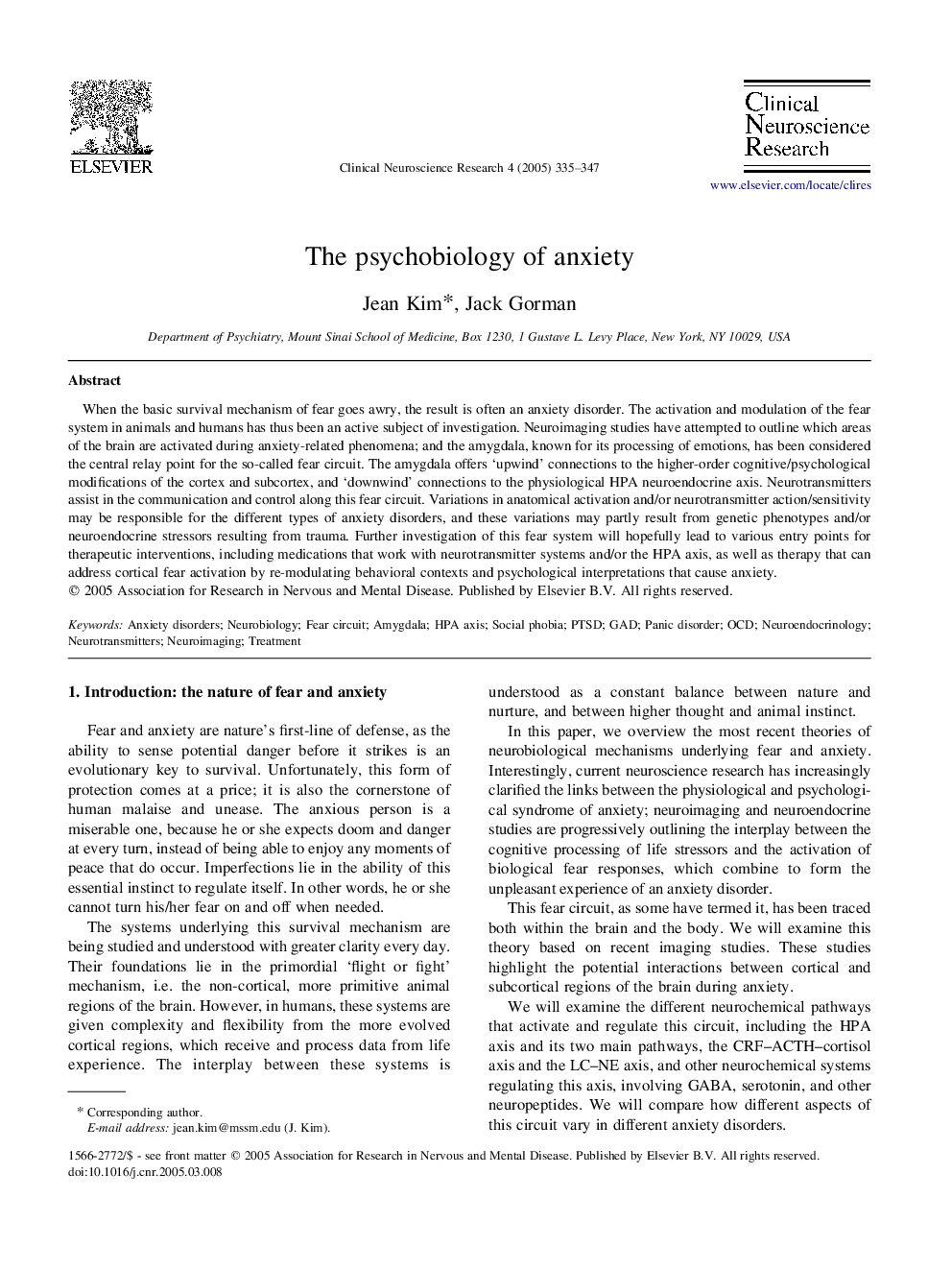| Article ID | Journal | Published Year | Pages | File Type |
|---|---|---|---|---|
| 9189911 | Clinical Neuroscience Research | 2005 | 13 Pages |
Abstract
When the basic survival mechanism of fear goes awry, the result is often an anxiety disorder. The activation and modulation of the fear system in animals and humans has thus been an active subject of investigation. Neuroimaging studies have attempted to outline which areas of the brain are activated during anxiety-related phenomena; and the amygdala, known for its processing of emotions, has been considered the central relay point for the so-called fear circuit. The amygdala offers 'upwind' connections to the higher-order cognitive/psychological modifications of the cortex and subcortex, and 'downwind' connections to the physiological HPA neuroendocrine axis. Neurotransmitters assist in the communication and control along this fear circuit. Variations in anatomical activation and/or neurotransmitter action/sensitivity may be responsible for the different types of anxiety disorders, and these variations may partly result from genetic phenotypes and/or neuroendocrine stressors resulting from trauma. Further investigation of this fear system will hopefully lead to various entry points for therapeutic interventions, including medications that work with neurotransmitter systems and/or the HPA axis, as well as therapy that can address cortical fear activation by re-modulating behavioral contexts and psychological interpretations that cause anxiety.
Keywords
Related Topics
Health Sciences
Medicine and Dentistry
Clinical Neurology
Authors
Jean Kim, Jack Gorman,
